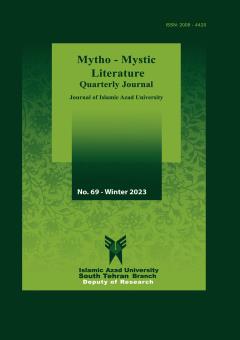-
-
List of Articles
-
Open Access Article
1 - The Spiritual Journey of the Mystic and the Force Schema in Masnavi Manavi and Nazm-as-suluk; A Comparative Study
Khadijeh Bahrami Rahnama -
Open Access Article
2 - Psycho-Mythological Analysis of a Story of Children: The Study of the Horn that got Croup; Based on the Theory of Individuation
Amir Hossein Zanjanbar Ayoob Moradi -
Open Access Article
3 - The Archetype of Hero in Hamzanama: A Phenomenological Approach
alireza sayadnejad fatemeh namazi -
Open Access Article
4 - Cutting the Opponent in Half in the Myths of Zahhak Marduk; A Comparative Study
Arash Ghofrani saeid kheirkhah Hossein Azarpeyvand -
Open Access Article
5 - The Strategy of Moving away from People; A Comparative Study Based on the Views of Jalāl-a-Din Rūmi and Karen Horney
Shahram Mahmoodi Ebrahim Danesh Faramarz Jalalat -
Open Access Article
6 - Mythological Themes in Shahriar Mandanipour's Story: The Lady of the Garden
Roqayyeh Mahmoodiwand-Bakhtyari Parvaneh Adelzadeh Kamran Pashayi-Fakhri
-
The rights to this website are owned by the Raimag Press Management System.
Copyright © 2021-2025







